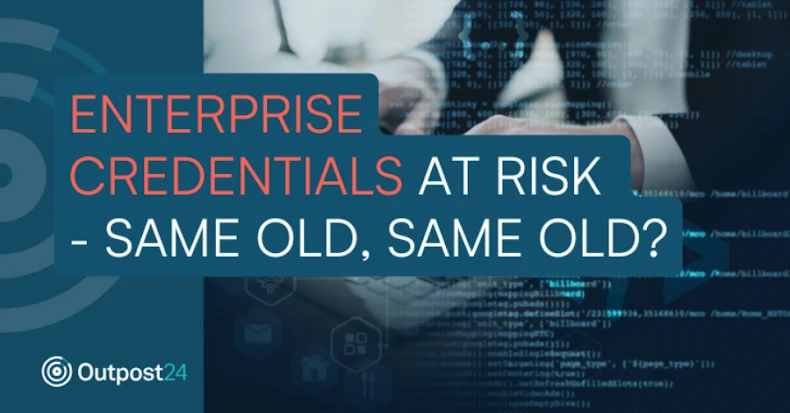
Imagine this. Sarah, an accountant, receives periodic password reset-like emails from her organization’s cloud provider. She clicks the link, enters her credentials, and returns to the spreadsheet. However, without realizing it, she made a big mistake. Sarah accidentally gives her login information to a cybercriminal. Cybercriminals go as far as dark web marketplaces and sell her credentials for about $15. It’s not a one-time thing, but when you scale it up, you get a lot of revenue.
Credential Compromise Lifecycle
Users create credentials: With dozens of standalone business apps, each with its own login, employees must create numerous accounts. But keeping track of multiple unique usernames/passwords is a pain, so I end up reusing passwords or changing them slightly. Hackers compromise credentials: Attackers obtain these credentials through phishing, brute force attacks, third-party compromise, or exposed API keys. And often no one even realizes it happened. Hackers aggregate and monetize credentials. Criminal networks dump stolen credentials into large databases and sell them on underground markets. Hackers sell your company’s login information to the highest bidder. Hackers distribute and weaponize credentials. The buyer then disseminates these credentials throughout the criminal network. Bots test them against every business app they can find, while human operators hand-pick the most valuable targets. Hackers actively misuse credentials. A successful login allows the attacker to gain entry, escalate privileges, and begin actual work (data theft, ransomware, or whatever is most profitable). By the time you notice strange login patterns or unusual network activity, they may have been under the hood for days, weeks, or even longer.
Common compromise vectors
Criminals have no shortage of ways to obtain your company’s user credentials.
Phishing campaigns: Attackers create legitimate-looking fake emails with stolen company logos and convincing copy. Even the most security-conscious employees can fall for these sophisticated scams. Credential Stuffing: Attackers capture passwords from old breaches and test them everywhere. A 0.1% hacking success rate may sound small, but it quickly adds up when you consider the prevalence of password reuse and the fact that hackers are testing millions of credentials per hour. Third-party compromise: When LinkedIn is hacked, attackers don’t just target LinkedIn users, they test the same credentials against all kinds of other business apps. Your company may have the most robust security in the world, but it’s still vulnerable if users reuse credentials. API key disclosure: Developers accidentally expose their credentials in GitHub repositories, configuration files, and documentation. Automated bots scan these 24/7 and collect them within minutes.
criminal ecosystem
Just as a car theft ring has many different actors, from street-hunting thieves to salvage yard owners to overseas exporters, the credential theft ecosystem has many different bad actors who aim to do more with stolen credentials. But knowing their strategies can help you better protect your organization.
Opportunistic scammers want quick cash. They drain bank accounts, make fraudulent purchases, and steal cryptocurrencies. They are not picky. If business credentials work for consumer-facing sites, they’ll use it.
Automated botnets are credential testing machines that never sleep. They throw millions of username and password combinations into thousands of websites, looking for something that clicks. The name of their game is quantity, not precision.
Criminal markets then act as intermediaries that buy stolen credentials in bulk and resell them to end users. Think of it as the eBay of cybercrime, with search capabilities that allow buyers to easily find your organization’s data.
Organized crime groups treat your credentials like a strategic weapon. They maintain access for months, mapping networks and planning large-scale attacks such as ransomware and IP theft. These are the kind of experts who can turn a single credential breach into a multi-million dollar disaster.
Real world impact
Once an attacker has a valid set of credentials, the damage begins quickly and spreads everywhere.
Account takeover: Hackers bypass security controls with legitimate access. They are reading emails, retrieving customer data, and sending messages that appear to come from employees. Lateral movement: One compromised account quickly becomes 10, then 50. Attackers hop across networks, escalating privileges and plotting the most valuable systems. Data theft: Attackers are focused on identifying valuable information such as customer databases, financial records, and trade secrets and siphoning it through channels that are normal for monitoring tools. Resource abuse: If an attacker launches a cryptocurrency mining operation, sends spam through your email system, or exhausts your own project’s API quota, your cloud bill will explode. Ransomware Deployment: When hackers are looking for big rewards, they often resort to ransomware. They encrypt everything important to you and ask you to pay, knowing you will probably end up paying because restoring from a backup takes forever and is not a cheap process.
But that’s just the beginning. You can also consider regulatory fines, lawsuits, huge remediation costs, and reputations that can take years to recover. In fact, many organizations are unable to fully recover from a large-scale credential compromise incident.
Take action now
In fact, some of your company’s user credentials may have already been compromised. And the longer your compromised credentials go undetected, the bigger the target is behind you.
Prioritize finding compromised credentials before criminals use them. For example, Outpost24’s Credential Checker is a free tool that shows you how often your company’s email domains appear in leaked repositories, observed channels, or underground marketplaces. This free, no-registration check does not display or store individual compromised credentials. It simply makes you aware of your level of risk. Check your domain for compromised credentials now.
Source link

